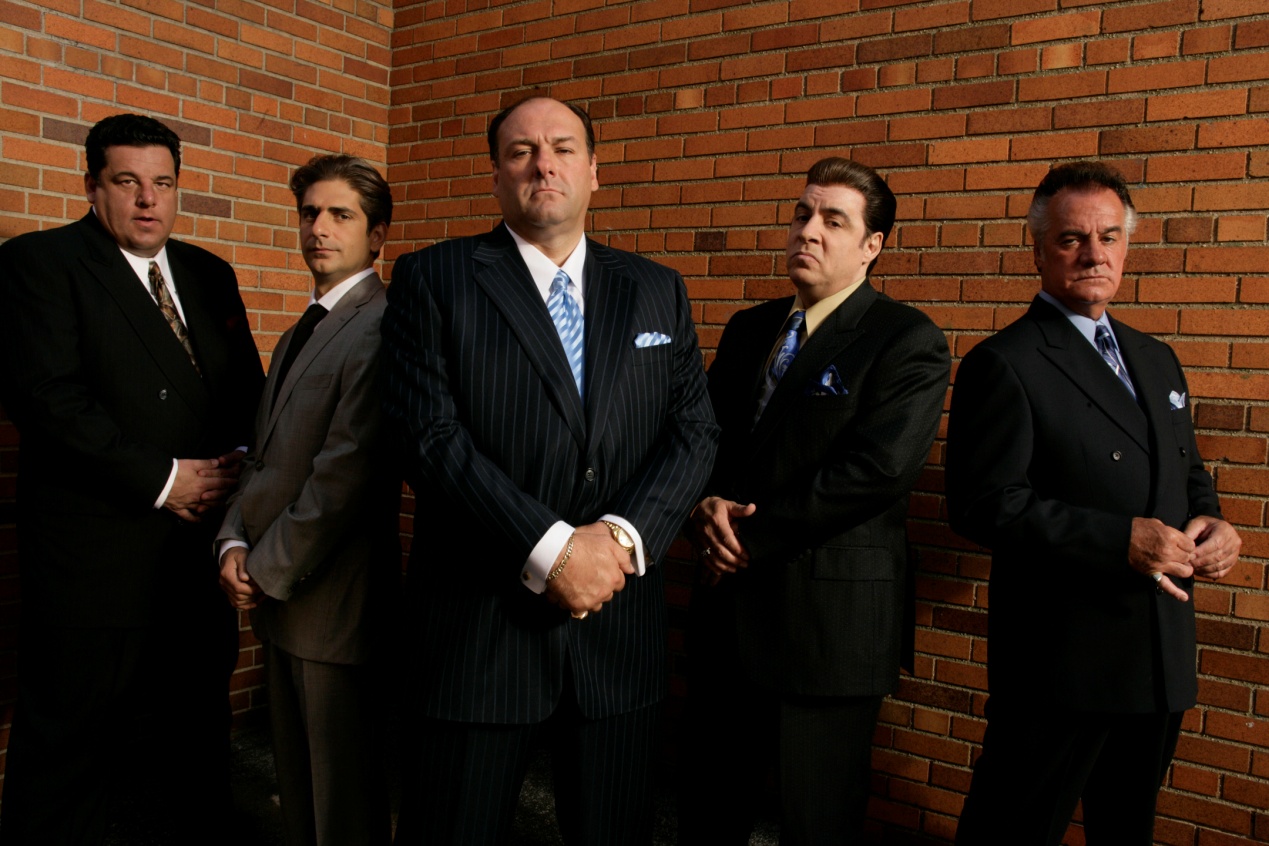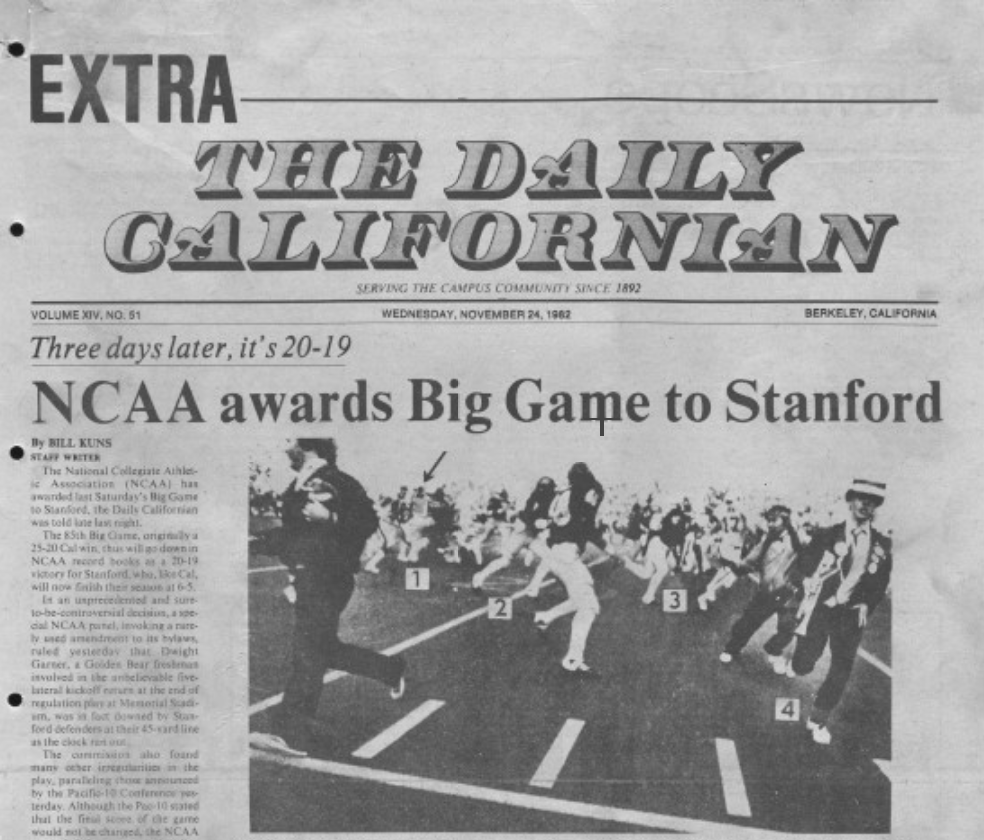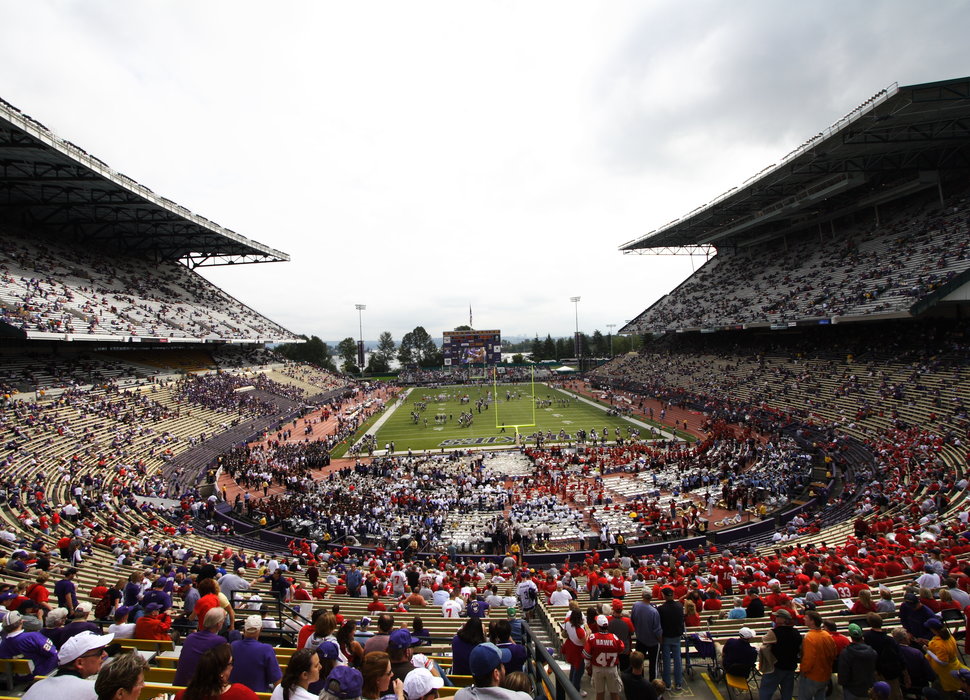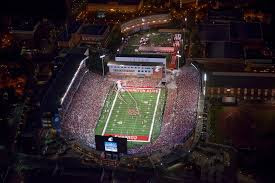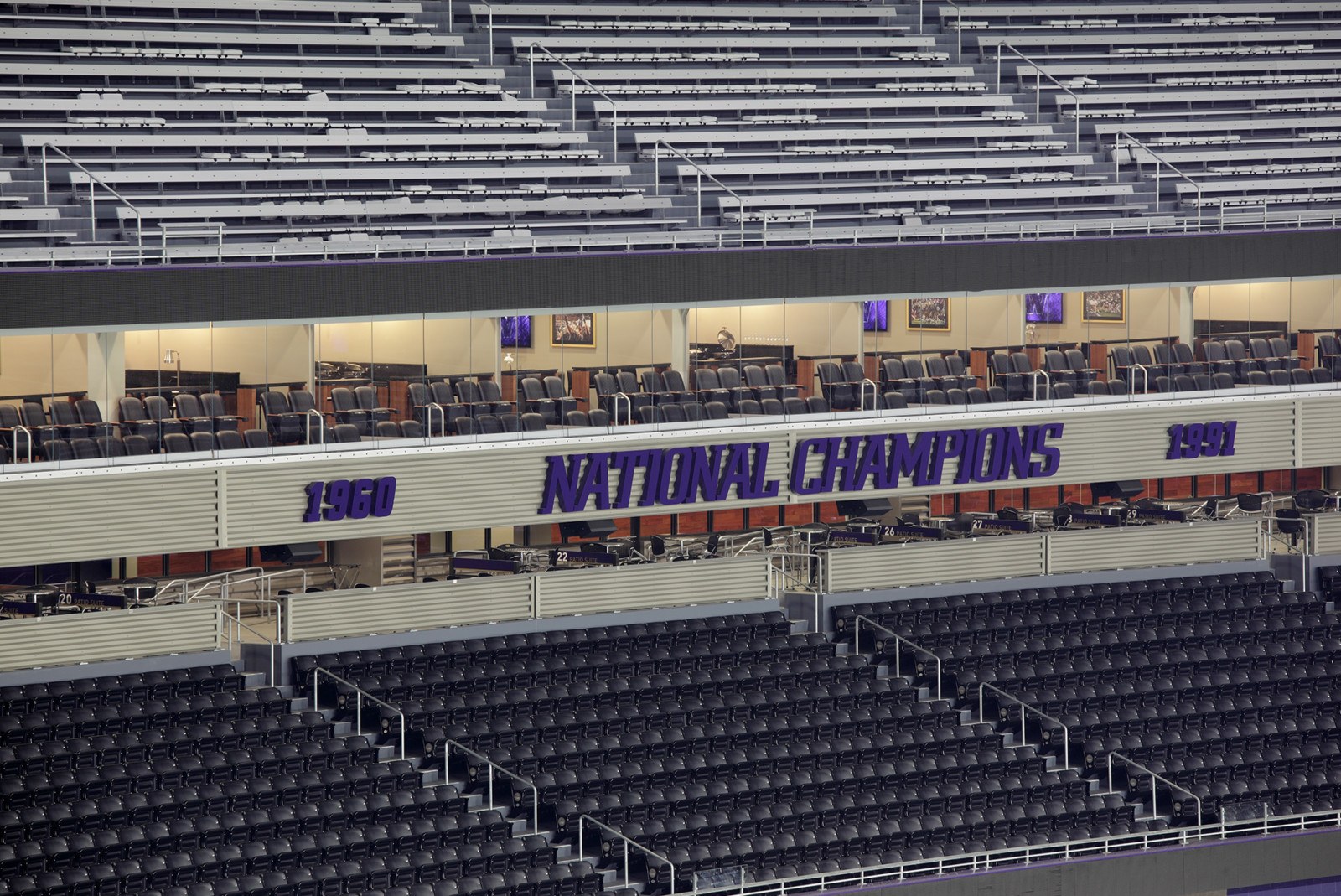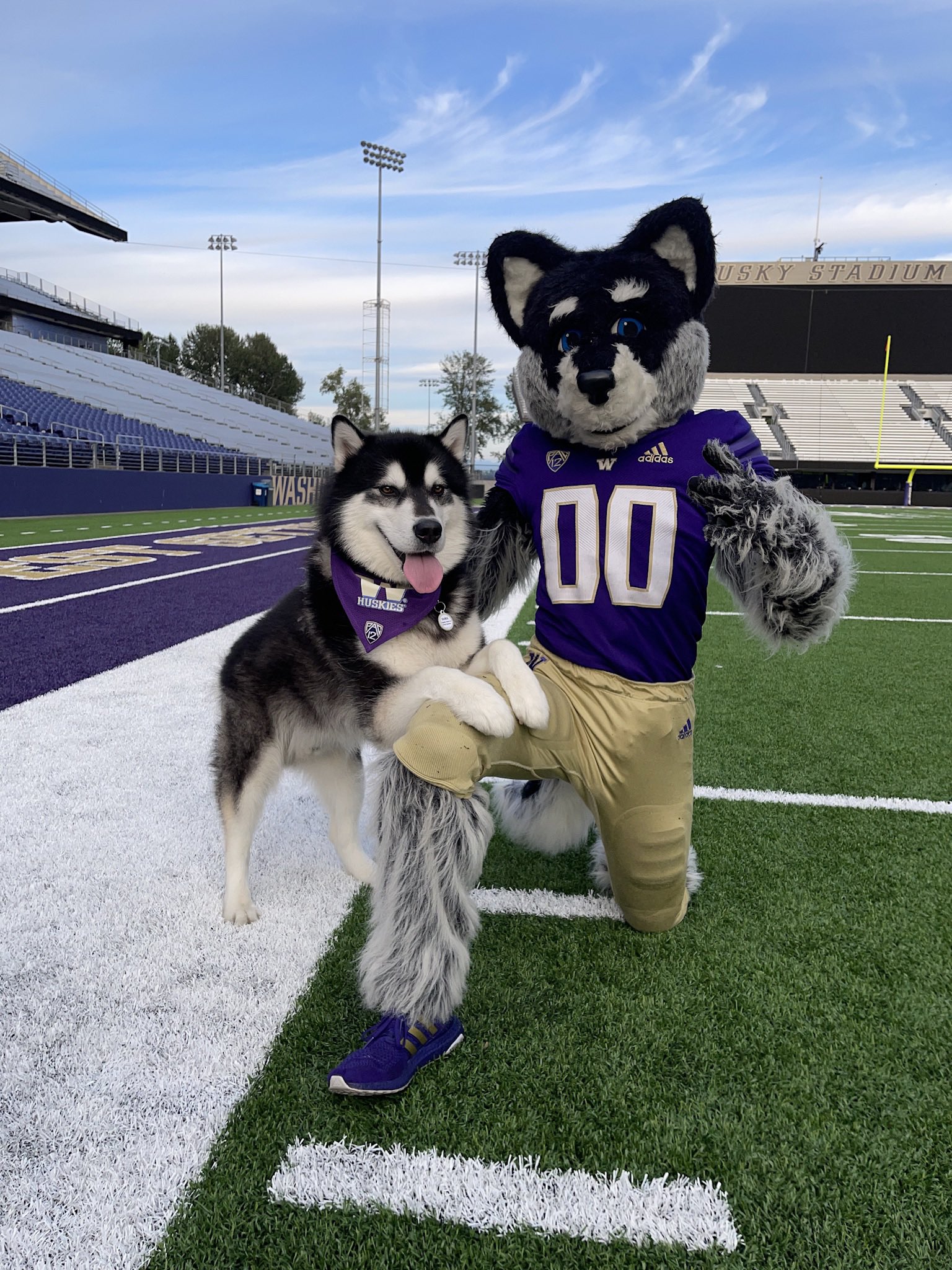The entire State of Washington is in the Pacific Time Zone, 3 hours behind New York. Adjust your timepieces accordingly.
Tickets. The Washington Huskies come close to a sellout every game. So do the Washington State Cougars. And for this game, tickets will be next to impossible to get, at least from the schools themselves. You may need a site like StubHub or Seatgeek.
UW games are expensive. In the lower level, they're $160 in midfield, and $75 near the goal lines and in the end zones. In the upper level, they're $75 in midfield and $45 toward the ends. WSU games are considerably cheaper: $65 in midfield, $50 toward the ends, and $25 in the end zone.
Getting There. Keep in mind, this will be Thanksgiving weekend. The normal travel rules may not apply, due to demand reducing the available seats and jacking up prices.
It's 2,641 miles from Times Square in Midtown Manhattan to Martin Stadium in Pullman; and 2,864 miles to Husky Stadium in Seattle. In other words, if you're going, you're going to want to fly.
After all, even if you get someone to go with you, and you take turns, one drives while the other one sleeps, and you pack 2 days' worth of food, and you use the side of the Interstate as a toilet, and you don't get pulled over for speeding, you'll still need over 2 full days to get there. One way. But, for future reference, if you really, really want to drive...
To get to the UW campus in Seattle: Get onto Interstate 80 West in New Jersey, and stay on that until it merges with Interstate 90 west of Cleveland, then stay on 90 through Ohio, Indiana, and Illinois, into Wisconsin, where it merges with Interstate 94. Although you could take I-90 almost all the way, I-94 is actually going to be faster. Stay on I-94 through Minnesota and North Dakota before re-merging with I-90 in Montana, taking it through Idaho and into Washington.
You'll get off I-90 at Exit 10, and take Interstate 405 North, to Exit 14. Here, you'll take State Route 520 West across Lake Washington, and turn right onto Montlake Blvd. The stadium will soon be on your right.
Not counting rest stops, you should be in New Jersey for an hour and a half, Pennsylvania for 5:15, Ohio for 4 hours, Indiana for 2:30, Illinois for 2 hours, Wisconsin for 3:15, Minnesota for 4:30, North Dakota for 6 hours, Montana for a whopping 13 hours (or 3 times the time it takes to get from New York to Boston), Idaho for 1:15 and 6:45 in Washington. That's 50 hours, and with rest stops, you're talking 3 full days.
That's still faster than Greyhound (67 1/2 hours, changing in Columbus, Chicago, Minneapolis, Billings and Spokane, leaving New York at 12:05 AM on Tuesday and arriving in Seattle at 4:35 PM on Thursday, $897 round-trip, but it can drop to $663 with advanced purchase) and Amtrak (67 hours, changing in Chicago, $700 before booking sleeping arrangements).
On Amtrak, you would leave Penn Station on the Lake Shore Limited at 3:40 PM Eastern Time on Tuesday, arrive at Union Station in Chicago at 10:12 AM Central Time on Wednesday, and board the Empire Builder at 2:15 PM, and would reach King Street Station at 11:55 AM Pacific Time on Thursday. (An 11:55 AM Friday arrival might not get you there in time for the kickoff.) But the Lake Shore Limited is sold out, so forget the train.
Flying to Pullman? Good luck, you may have to fly into Spokane, and then rent a car to go 75 miles south.
Once In the City. The State of Washington was admitted to the Union as the 42nd State on November 11, 1889.
Founded in 1853, and named for a Chief of the Duwamish Indians,
Seattle is easily the biggest city in America's Northwest, with 740,000 people within the city limits and just over 4 million in its metropolitan area. Just as Charlotte is called the Queen City of the Southeast, and Cincinnati the Queen City of the Midwest, Seattle is known as the Queen City of the Northwest. All its greenery has also gotten it the tag the Emerald City.
With Lake Washington, Puget Sound, and the Cascade mountain range nearby, including Mount Rainier, it may be, on those rare clear days, America's most beautiful metro area.
East-west street addresses increase from Puget Sound and the Alaskan Way on eastward. North-south addresses are separated by Yesler Way. At 967 feet high, Columbia Center, a.k.a. The Black Tower, is the tallest building in the Northwest, and, for the moment, the tallest building in North America west of the Rocky Mountains. If you're wondering about Seattle's most famous icon, the Space Needle, it was once the tallest structure west of the Mississippi River, but at 605 feet it is well short of the Black Tower.
The
Times is Seattle's only remaining daily print newspaper. The
Post-Intelligencer is still in business, but in online form only. This is mainly due to the high cost of both paper and ink, and has doomed many newspapers completely, so Seattle is lucky to still, sort of, have 2 daily papers.
Sales tax in the State of Washington is 6.5 percent, but in the City of Seattle, it's 9.5 percent. Interstate 405 serves as Seattle's "beltway." Pullman doesn't have one.
The city's population is about 70 percent white, 14 percent Asian, 8 percent black, and 7 percent Hispanic. Seattle City Light is their electric company.
Off-peak bus fare in Seattle is $2.25. In peak hours, a one-zone ride (either totally within the City of Seattle or in King County outside the city) is $2.50 and a two-zone ride (from the City to the County, or vice versa) is $3.00. The monorail is $2.25. The light rail fares, depending on distance, are between $2.00 and $2.75. Fares are paid with a farecard, or, as they call it, an ORCA card: One Regional Card for All.
Although Seattle is the largest city in the State of Washington, the State Capitol is Olympia, 60 miles to the southwest. It can be reached by public transportation, taking Bus 594 Lakewood, and then transferring to Bus 620. It takes about 2 1/2 hours.
The Washington State House in Olympia
As a port city, Seattle has always been a home to job-seekers, both native-born and immigrant. As a result, there has frequently been trouble. There was a riot in 1886. In 1919, the leftist Industrial Workers of the World (a.k.a. the IWW or "Wobblies") led a 6-day general strike. There were anti-Filipino riots in Washington State in the Yakima Valley in 1927 and the Wenatchee Valley in 1928. In 1999, a meeting of the World Trade Organization was disrupted by leftist protestors.
In 2020, despite restrictions due to the COVID-19 pandemic, Seattle was the site of a demonstration calling for the city to become a "Cop-Free Zone," following multiple accusation of police brutality, there and all over America.
The University of Washington was founded in 1861, 28 years before Statehood. In addition to its main campus, about 4 miles northeast of downtown, there are campuses (campii?) in Tacoma and Bothell. Some of its greatest athletes, outside of football, include:
* Baseball: Fred Hutchinson, Mike Blowers, Kevin Stocker and Tim Lincecum.
* Basketball: Bob Houbregs, Rod Thorn, Todd MacCulloch, Nate Robinson, Brandon Roy, Isaiah Thomas (not to be confused with Isiah Thomas), Markelle Fultz, and women's star Kelsey Plum.
* Soccer: Hope Solo.
Notable UW graduates in other fields:
* Pilots and Astronauts: Joseph Sutter (chief designer of the Boeing 747), Albert S. Crossfield (the 1st man to fly faster than Mach 2 and a designer of the even faster X-15 plane), and Michael P. Anderson (killed in the 1986 Challenger disaster).
* Art: World Trade Center designer Minoru Yamasaki and painter Chuck Close.
* Business: Baskin-Robbins co-founder Irv Robbins (Burt Baskin went to the University of Illinios), Costco founder Jeffrey Brotman '64, MySpace co-founder Chris DeWolfe, and both of Bill Gates' parents, Bill Gates Sr. and Mary Maxwell Gates, but not Bill Jr., who famously went to Harvard and dropped out.
* Literature: Children's book author Beverly Cleary, Dennis the Menace creator Hank Ketcham, Dune author Frank Herbert, Ann Rule, Tom Robbins, Dust Bowl historian Timothy Egan, and noted political cartoonists David Horsey and Mike Lukovich.
* Government, representing the State of Washington unless otherwise stated: Secretary of the Interior Sally Jewell, Secretary of Transportation Brock Adams, Speaker of the House of Representatives Tom Foley; U.S. Senators: Warren Magnuson, Henry "Scoop" Jackson and the aforementioned Brock Adams; Governors: Clarence D. Martin (ironically, the namesake of Washington State's stadium), Albert Rosellini, Daniel J. Evans, Booth Gardner, Christine Gregoire, and current officeholder Jay Inslee; and former Governor Keith Miller of Alaska; and Mayors of Seattle: Norm Rice, Greg Nickels and current officeholder Bruce Harrell.
Another notable House of Representatives member who graduated from UW was the 1st woman elected, Jeannette Rankin. Elected in 1916, she voted against U.S. entry into World War I in 1917, and was defeated in 1918. She finally got back in with the 1940 election, was the only House member to vote against U.S. entry into World War II in 1941, and was defeated in 1942. Another notable UW grad in politics is CNN and NPR correspondent Angela Rye, former General Counsel to the Congressional Black Caucus.
* Military: Major General Leslie Groves, head of the Manhattan Project; Colonel Gregory "Pappy" Boyington, Marine fighter pilot, World War II flying ace, and Congressional Medal of Honor recipient; and Lieutenant Colonel William H. Holloman III, one of the Tuskegee Airmen, and the U.S. Air Force's 1st black helicopter pilot.
* Science: Alfred Moen, inventor of the single-handed mixing faucet, and founder of the company that bears his name; and Tim Paterson, creator of the MS-DOS operating system.
* Music: Kenny G is a UW graduate, as are Soundgarden lead guitarist Kim Thayil, Posies guitarist Ken Stringfellow, and Ryan Lewis, known for his work with rapper Macklemore. (Also a Seattle native, he graduated from Evergreen State College in Olympia.) The early 1960s folksinging group The Brothers Four and alternative rock group The Presidents of the United States of America formed at UW.
* Acting: Robert Armstrong (who played Carl Denham in the original 1933 version of King Kong), Frances Farmer, Dyan Cannon, Dawn Wells, Leann Hunley, Patrick Duffy, Jean Smart, TV director Lee Shallat, Pamela Reed, Julia Sweeney, Richard Karn, Kyle MacLachlan (yes, the Twin Peaks star really is from Washington State, from Yakima), Star Trek actor Jeffrey Combs, James Caviezel, Joel McHale, Anna Faris, Rainn Wilson, Jeopardy! star contestant-turned-host Ken Jennings, and, the biggest legend of them all, Bruce Lee. While not an actor, travel writer and PBS host Rick Steves is a UW graduate. Entertainment Tonight co-host Robb Weller (who falsely claimed to have invented "The Wave" at a UW football game in 1981).
Unfortunately, UW is also the Alma Mater of serial killer Ted Bundy and murder defendant (conviction overturned) Amanda Knox.
Pullman is about 79 percent white, 11 percent Asian, 6 percent Hispanic, 3 percent black and 1 percent Native American. The Agricultural College, Experiment Station and School of Science of the State of Washington was founded in 1890, 4 months after Statehood. It was renamed the State College of Washington in 1905, and Washington State University in 1959.
Like many schools now known as "(State Name) State University," the teams were originally called the Aggies, for "Agricultural," before becoming the Cougars. The area consisting of Eastern Washington and the Idaho Panhandle is called "The Palouse," after a Native tribe that lived there.
The Washington State campus in Pullman
"Wazzu" have a campus in downtown Seattle, but their main campus is in Pullman, all the way across the State, 286 miles away. This campus is actually close to the State Line, and is 7 miles from Moscow, Idaho, where the University of Idaho is located.
In their 1982 College Football Preview issue, Sports Illustrated listed Austin, home of the University of Texas, as the best college town. The worst? It named 2: "1. Pullman, Washington, home of Washington State. To party, students must drive 10 miles to Moscow, Idaho. 2. Moscow, Idaho." Ouch.
Notable non-football athletes at Wazzu include baseball players Gene Conley, Ron Cey, Tom Niedenfuer, Doug Sisk, John Olerud, Scott Hatteberg, and Aaron Sele; basketball players Craig Ehlo and Klay Thompson; boxer Pete Rademacher, Olympic Gold Medalist in Melbourne in 1956; Henry Rono, former world-record holder in the 3,000, 5,000 and 10,000 meters and the 3,000-meter steeplechase, for Kenya, although he never won an Olympic medal; Julius Korir, winner of the Olympic Gold Medal in the steeplechase for Kenya, in Los Angeles in 1984; and Lisa Roman, Olympic Gold Medalist in rowing for Canada, in Tokyo in 2020 (2021)
Also, ESPN commentator Cindy Brunson; and, despite his Georgia roots, Keith Jackson went to Washington State because of its journalism school, graduating with the Class of 1954.
Notable non-sports graduates include:
* Entertainment: Far Side cartoonist Gary Larson, and Nirvana bass guitarist Krist Novoselic.
* Journalism: Edward R. Murrow.
* Politics, representing the State of Washington unless otherwise stated: Governor Mike Lowry and Senator Patty Murray.
* Social Science: Civil rights and poverty analyst William Julius Wilson, "Peter Principle" creator Laurence Peter, and LSD advocate Timothy Leary.
Going In. Husky Stadium, the home of the University of Washington football, the largest stadium in the Pacific Northwest (including Canada), is right on Lake Washington, and is one of the nicest-looking stadiums in college football. A rare feature in major college football is that fans can dock right outside and tailgate by boat. (The only others at which this is possible: Neyland Stadium at the University of Tennessee, and Acrisure Stadium, formerly Heinz Field, for University of Pittsburgh games.)
The playing surface is named Alaska Airlines Field, just as their arena, the Hec Edmondson Pavilion, is also named the Alaska Airlines Arena. The field is, oddly, aligned east-to-west. Given the rain situation, it's very possible that the cloud cover means less Sun interference during the game. The field was natural grass until the switch to artificial turf in 1968, and has been artificial ever since.
Tailgating by boat on Lake Washington
On October 6, 2017,
Thrillist compiled a list of their
Best
College Football Stadiums, the top 19
percent of college football, 25 out of 129. Husky Stadium came in 3rd:
Its stadium might be the most picturesque setting in American sports. Boats line up on Lake Washington outside the east end zone, with the snow-capped Cascade Mountains set behind them in the distance creating a scene so beautiful it’s a legitimate distraction during the game. The stadium's metal roof and vertical stands -- which inspired Seahawks owner Paul Allen to later incorporate those elements into the notoriously deafening CenturyLink Field downtown -- project the crowd noise up and out for miles.
Washington State opened Martin Stadium in 1972, on the site of their previous facility, Rogers Field, which opened in 1892, and burned down in 1971, widely believed to have been arson. In the interim, Wazzu played 80 miles to the north, at Joe Albi Stadium in Spokane.
Clarence D. Martin Jr., better known as Dan Martin, made a big donation to the construction of the new stadium, on the condition that it be named for his father, the former Governor and a UW graduate, which no doubt brings laughs to UW fans. The address is 720 NE Stadium Way, a mile and a half east of downtown Pullman. Parking is much cheaper: $9.00. There is no public transportation on weekends.
Martin Stadium seats 32,952, and has never seated more than 38,000. The field has always been artificial, and, as at UW, is aligned east-to-west. In 2021, Richland, Washington-based Gesa Credit Union bought naming rights, so it's Gesa Field at Martin Stadium.
The nearby University of Idaho crossed the State Line to play their home games at Rogers Field in the 1969 and 1970 seasons, because their Neale Stadium had been condemned as unsafe. But it was their new home that proved unsafe, burning down, and so WSU and UI shared Albi Stadium in Spokane in 1970 and 1971. Idaho opened the Kibbie Dome during the 1971 season, but moved back to Martin Stadium in the 1999, 2000 and 2001 seasons, as they transitioned from NCAA Division I-A to Division I-AA.
Food. As a waterfront city, and as the Northwest's biggest transportation and freight hub, it is no surprise that Seattle is a good food city, with the legendary Pike Place Market serving as their "South Street Seaport."
Fortunately, Husky Stadium lives up to this. A website named Sports-Teller.com rates these as the Top 5 items available, all of them available in the Stadium's Concourse:
1. Ivar's Seafood, featuring Salmon Burgers and Fish & Chips.
2. Kidd Valley Burgers, also featuring Fries and Milkshakes.
3. Gameday Grub, with Hot Dogs, Chicken Fingers, Cheesy Nachos, Popcorn and Peanuts.
4. Dawg Bites, with multi-ethnic sausages.
5. Trophy Cupcakes, with the Chocolate ones recommended.
1. The Elephant Ears Cart, featuring the pastry known as "elephant ears," which I thought were only popular in the Midwest.
2. Healthy Stand, featuring Turkey Sandwiches and Turkey Wraps, and Salads.
3. Cougars Concessions, with Cheeseburgers, Hot Dogs, Chicken Fingers, Fries, Pretzels and Popcorn.
Team History Displays. Seattle is an underachieving city in sports. But the Washington Huskies might be the metro area's most successful team, unless you count the 4-time WNBA Champion Seattle Storm.
Washington claims 2 National Championships. In 1960, the Helms Athletic Association recognized them as National Champions, but both the Associated Press (the sportswriters) and United Press International (the coaches) selected the University of Minnesota. In 1991, the final UPI poll voted them Number 1, while the AP gave it to the University of Miami. These titles are the only championship notations on the walls of Husky Stadium.
The Huskies were named retroactively named National Champions for 1910 by sports historian Bill Libby. In 1984, when Brigham Young University rode a weak schedule to a 13-0 season and the AP and UPI National Championships, 3 lesser organizations recognized the Huskies as National Champions, even though they didn't even win the Pac-10 title, as their only loss was to UCLA.
Washington have won 17 Conference Championships, all in, for all intents and purposes, the same league, under various names: The Pacific Coast Conference in 1916, '19, '25 and '36; the Athletic Association of Western Universities (AAWU) in 1959, '60 and '63; the Pacific-Eight Conference in 1977, the league's last season under that name; the Pacific-Ten Conference in 1980, '81, '90, '91, '92, '95 and 2000; and the Pacific-Twelve Conference in 2016 and '18. They also won a share of the Division title in 2017, losing a tiebreaker for the Championship Game berth to Stanford; and 2020, but a COVID outbreak left them unable to play the Championship Game.
The Huskies have won the Rose Bowl in 1959, 1960, 1977, 1981, 1990, 1991 and 2000. They've also reached the Rose Bowl in 1923 (a tie, the rest of these were losses), 1925, 1936, 1943, 1992 and 2018.
They've won the 1984 Orange Bowl, the 1937 Poi Bowl, the 1979 Sun Bowl, the 1982 and 1997 Aloha Bowl, the 1985 and 1989 Freedom Bowl, the 1987 Independence Bowl, the 2010 Holiday Bowl, the 2013 Fight Hunger Bowl, the 2015 Heart of Dallas Bowl, and the 2019 Las Vegas Bowl.
There are 15 Husky figures in the College Football Hall of Fame, 4 of them coaches. Darrell Royal was their head coach in 1956, but is in for what he did at the University of Texas. The other 3 are legit Husky Hall-of-Famers: Gil Dobie, 1908-16; James Phelan, 1930-41; and Don James, 1975-92. Not in the Hall is 1957-74 coach Jim Owens, but, due to his having coached the 1960 title team, he is honored with a statue outside Husky Stadium.
The 11 players: 1923-25 halfback George "Wildcat" Wilson, 1926-28 halfback Chuck Carroll, 1929-31 tackle Paul Scwegler, 1934-36 guard Max Starcevich, 1935-37 tackle Vic Markov, 1949-51 halfback Hugh McElhenny, 1949-52 quarterback Don Heinrich, 1958-60 quarterback Bob Schloredt, 1962-64 guard and linebacker Rick Redman, 1989-91 defensive tackle Steve Emtman, and 1989-92 offensive tackle Lincoln Kennedy.
They have 3 retired numbers: Carroll's 2, Wilson's 33, and the 44 of 1948-50 running back Roland Kirkby. McElhenny, 1946-47 defensive tackle Arnie Weinmeister, and 1975-77 quarterback Warren Moon are in the Pro Football Hall of Fame. Moon and 1969-72 slotback Tom Scott are in the Canadian Football Hall of Fame.
Washington State aren't nearly as successful. In 1915, they went undefeated, going 7-0, and allowing just 10 points all season. The Rose Bowl was restarted after the single experiment of 1902, and Washington State beat Brown University. But none of the organizations that retroactively recognized National Champions recognized them as such.
They've won only 4 Conference Championships: 1917, 1930, 1997 and 2002. They've also won a share of the 2018 Pac-12 North, but lost to Washington, and thus lost the tiebreaker for the Championship Game berth. There is no notation of these championships in the fan-viewable areas.
The 1916 Rose Bowl remains their only win in that game. They've also lost it in 1930 and 1997. They've also won the 1988 Aloha Bowl, the 1992 Copper Bowl, the 1994 and 2018 Alamo Bowl, the 2001 and 2015 Sun Bowl, and the 2003 Holiday Bowl.
Wazzu are known as a quarterback factory, and their 1st great quarterback, in 1950, was Jack Elway, later the head coach at Cal State Northridge, San Jose State and Stanford, and the father of an even better quarterback, Stanford and Denver Broncos legend John Elway. The school has also produced Jack Thompson in 1978, Mark Rypien in 1985, Timm Rosenbach in 1988, Drew Bledsoe in 1992, Ryan Leaf in 1997, Jason Gesser in 2002, and Gardner Minshew in 2018. Of those, however, only Bledsoe had a good pro career.
They've had 3 coaches and 5 players make the College Football Hall of Fame. The coaches: William "Lone Star" Dietz, 1915-17; Babe Hollingbery, 1926-42; and Dennis Erickson, 1987-88, who then left them for the University of Miami, where he built his real Hall of Fame credentials.
The players: 1929-31 center Mel Hein, 1929-31 tackle Glenn "Turk" Edwards, 1982-85 running back Rueben Mayes, 1985-88 guard Mike Utley, and 1988-91 kicker Jason Hanson. Hein's 7 and Thompson's 14 have been retired by Wazzu. Hein and Edwards were elected to the Pro Football Hall of Fame. Hugh Campbell, a 1959-62 receiver, has been elected to the Canadian Football Hall of Fame, for winning 5 straight Grey Cups with the Edmonton Eskimos (now named the Edmonton Elks), where his quarterback was UW man Warren Moon.
The rivalry between the Huskies and the Cougars -- dogs and cats -- is a rough one, sometimes played in rough weather, including the occasional snowstorm. The rivalry was first played in 1900, and it was a tie. The Huskies dominated early, going 13-4-1 from 1902 to 1925. They won 8 straight from 1959 to 1966, did that again from 1974 to 1981, won 6 straight from 1998 to 2003, and 7 straight from 2013 to 2019. They lead the rivalry, 74-33-6.
Governor Clarence Martin, the UW grad for whom WSU's stadium would be named, donated the Governor's Trophy in 1934, and it was given out until 1946. In 1963, the Big Apple Trophy was donated by the Washington Apple Commission, in honor of the State's production of that fruit. It became more commonly known as the Apple Cup.
Trophy case at Wazzu, showing where the Cup would be
Since the Apple Cup began to be awarded, the Huskies lead, 42-17. However, Wazzu did win it last season, so they are the current holders.
And, here, they hold it.
Stuff. The Husky Team Store is in the west end of Husky Stadium. The University Bookstore is at 4326 Univesrity Way NE, a mile northwest of the Stadium.
The Cougars don't have a big team store at their stadium. Your best bet for souvenirs would be at the Bookstore, or "The Bookie," at 1500 North Glenn Terrell Mall, adjacent to the southwest corner of the stadium.
In 2013, W. Thomas Porter wrote Go Huskies! Celebrating the Washington Football Tradition. In 2021, on the 20th Anniversary, Mike Gastineau (no relation to Jets legend Mark) published Fear No Man: Don James, the '91 Huskies, and the Seven-Year Quest for a National Football Championship. The only book I could find about Washington State football was a tribute to their 1915 team: Chance for Glory: The Innovation and Triumph of the Washington State 1916 Rose Bowl Team, by Darin Watkins, published in 2015, for the 100th Anniversary.
During the Game. As is usually the case, college campuses are well-patrolled by their inside police, and are safer than their surrounding cities. So, as long as you don't antagonize anyone, you (and, if you drove, your car) won't be in serious danger.
The west entrance of Husky Stadium, the enclosed end of the horseshoe, is the student entrance, known as "The Path of the Pack." The west end zone is the student section, and the Huskies enter from the northwest corner, in front of them. The much smaller east stand is known as Touchdown Terrace. At Martin Stadium, the main student section is in the northwest corner, at the open end of the horseshoe.
Lester J. Wilson wrote "Bow Down to Washington" to win a $25 grand prize, and it was introduced as the UW fight song before their November 6, 1915 win away to the University of California. They also have a song titled "Vic'try for Washington." The Washington State University Cougar Marching Band, calling themselves "The Best in the West," but they are less imaginative in the title of their fight song: It is titled "The Fight Song."
Harry and his live counterpart...
Or is that Harry and his costumed counterpart?
Since 1922, UW have been using live Husky mascots, and have had a costumed Harry the Husky since 1995. WSU introduced a live mascot, Butch T. Cougar, in 1927. He was named after 1920s Washington State football star Herbert "Butch" Meeker, and the T stands for "The." In 1978, with Butch VI in declining health, the University President discontinued the live mascot tradition, and started with a costumed one, wearing Number 12, representative of the students, "The 12th Man."
After the Game. Most places to eat are on the opposite side of the UW campus from the stadium. You might be better off going downtown, or to places near the Mariners' and Seahawks' venues. Sluggers, formerly known as Sneakers (or "Sneaks" for short), is at 538 1st Avenue South, at the northwest corner of CenturyLink Field. A little further up, at 419 Occidental Avenue South, is F.X. McRory's.
Buckley's in Queen Anne, 2 blocks west of Queen Anne Avenue N. ,at 232 1st Avenue W. at Thomas Street, just to the west of Seattle Center, near the waterfront, is the local Giants fan hangout. The Magnolia Village Pub, at 3221 W. McGraw Street at 33rd Ave. W., is also considered a Giants bar, but it's 5 miles northwest of downtown. The Ram at Kent Station, at 512 Ramsay Way in Kent, is the local Jets center, but it's 20 miles south of downtown.
Likewise, at Wazzu, you have to walk half a mile to the west, past several other athletic facilities, to get to anything to eat. The Coug, at 900 NE Colorado Street, is the best-known fan hangout.
If you visit during the European soccer season, which we are now in, the leading "football pub" in the Pacific Northwest is The George and Dragon Pub, 206 N. 36th Street, 5 miles north of downtown. Bus 40.
Sidelights. On February 3, 2017, Thrillist made a list ranking the 30 NFL cities (New York and Los Angeles each having 2 teams), and Seattle came in 3rd. They said:
If Seattle just had, like, six more weeks of nice weather, it would be the most desirable city to live in in quite possibly the world. But alas, Seattle does not have those extra weeks, and so you're left with a choice: do I make my home in a city that is going to give me the best seafood, and teriyaki, and cool ferry rides to islands, or do I never go to Seattle outside of the summer because too much time in a depressing perpetual light drizzle will give me seasonal affective disorder and force me to start listening to Stone Temple Pilots albums backwards looking for clues to the meaning of life?
On November 30, 2018, Thrillist published a list of "America's 25 Most Fun Cities," and Seattle came in 11th. Here are some other Seattle sports sites worth mentioning.
* Lumen Field and T-Mobile Park. The official address of Lumen Field, which opened in 2002 as Seahawks Stadium on the site of the Kingdome, is 800 Occidental Avenue South. It is in a neighborhood called SoDo, for "South of Downtown." (CenturyLink is an Internet provider. It bought out telecommunications carrier Qwest, which had naming rights from 2004 to 2011. When it was rebranded as Lumen Technologies in 2020, the stadium's name was changed from CenturyLink Field to Lumen Field.) T-Mobile Park, formerly known as Safeco Field, is next door.
Lumen Field is often cited as the loudest stadium in the NFL. This is in dispute, as Arrowhead Stadium in Kansas City claims to have set decibel records. But the way the stadium is built certainly gives the fans' noise less distance to travel: The upper levels were cantilevered over the lower sections, to fit within the limited space available for construction. Along with the angle of seats and the placement of the lower sections closer to the field, this provided a better view of the field than typically seen throughout the country and allowed for a 67,000 seat capacity. Space is available to increase the total capacity to 72,000 for special events. The city's impressive skyline can be seen through the north end, beyond the triangular end zone "Hawks Nest" stand.
It's also one of the best soccer facilities in the country, home to the revived version of the Seattle Sounders, one of the few teams in Major League Soccer that has a fan base that has proven it can regularly fill an NFL stadium. Their "Cascadia Derby" games against the Portland Timbers and the Vancouver Whitecaps are spectacular events. The U.S. soccer team has played at Lumen Field 4 times, and won them all. The stadium hosted the 2009 MLS Cup Final, in which Real Salt Lake beat the Los Angeles Galaxy on penalties. It has been approved by FIFA as one of the host venues for the 2026 World Cup.
* Sick's Stadium. The Pacific Coast League team that preceded the Mariners, known at various times as the Indians, the Rainiers and the Angels (when they were a farm team of the Anaheim club), played 2½ miles southeast of the future sites of T-Mobile Park & CenturyLink Field, first at Dugdale Field (1913-1932) and then, after a fire required rebuilding, at Sick's Stadium (1938-68 and 1972-76, built by Rainiers' owner Emil Sick).
The Seattle Pilots also played at Sick's, but lasted only one year, 1969, before being moved to Milwaukee to become the Brewers, and are now chiefly remembered for ex-Yankee pitcher Jim Bouton's diary of that season, Ball Four.
The book gives awful details of the place's inadequacy: As an 11,000-seat ballpark, it was fine for Triple-A ball in the 1940s, '50s and '60s; expanded to 25,420 seats for the Pilots, it was a lousy place to watch, and a worse one to play, baseball in anything like the modern era.
Elvis Presley sang at Sick's on September 1, 1957 (since it had more seats than any indoor facility in town). Supposedly, a 15-year-old Seattle native named James "Jimi" Hendrix was there. A few days prior, Floyd Patterson defended the heavyweight title there by knocking out fellow 1956 Olympic Gold Medalist Pete Rademacher.
Demolished in 1979 after the construction of the Kingdome (whose inadequacies were very different but no less glaring), the site of Sick's Stadium is now occupied by a Lowe's store. 2700 Rainier Avenue South, bounded also by McClellan & Bayview Streets & Martin Luther King Jr. Way.
Mount Baker station on the Link light rail system.
* Edmunson Pavilion.
Adjacent to Husky Stadium, at 3870 Montlake, is Alaska Airlines Arena at Clarence S. "Hec" Edmundson Pavilion, the home of "U-Dub" basketball since 1927. Hec was the school's longtime basketball and track coach, and "Hec Ed" hosted the NCAA Final Four in 1949 (Kentucky over Oklahoma State) and 1952 (Kansas over New York's St. John's). It has also hosted the State of Washington's high school basketball finals.
UW has been to the Final Four only once, in 1953, although they've won the regular-season title in the league now called the Pac-12 11 times, including 2012; and the Conference Tournament 3 times, most recently in 2011. Washington State, across the State in Pullman, reached the Championship Game in 1941, but hasn't been back to the Final Four since.
The Kingdome hosted the Final Four in 1984, Georgetown over Houston; 1989, Michigan over Seton Hall; and 1995, UCLA over Arkansas. It also hosted 3 U.S. soccer team matches: A win, a loss, and a draw.
* Tacoma Dome. The Sonics used this building during the 1994-95 season, as the Seattle Center Coliseum was demolished and the KeyArena put up in its place. Opening in 1983, it seats 17,100, and its most common use has been for minor-league hockey and concerts. 2727 East D Street, about 32 miles south of downtown Seattle. It can be reached from downtown Seattle by Bus 590, 592, 594 or 595, and it would take about 45 minutes.
Tacoma is also the home of Cheney Stadium, home of the Tacoma Rainiers of the Pacific Coast League, named for the former PCL team, the Seattle Rainiers. It is also the home of OL Reign of the National Women's Soccer League. Formerly known as the Seattle Reign, they are now owned by Olympique Lyonnaise of French soccer. 2502 S. Tyler Street.
The night Elvis sang at Sick's Stadium, September 1, 1957, he gave an afternoon concert in Tacoma, at the Lincoln Bowl, the football stadium of Lincoln High School. 707 S. 37th Street. The day before, he sang across the State, at Memorial Stadium in Spokane. He returned to Spokane to sing at their Coliseum on April 28, 1973, and again on April 27, 1976.
The Spokane Coliseum, at Boone Street and Howard Avenue, seated 5,400, lasted from 1954 to 1995, and was replaced by the 12,200-seat Spokane Veterans Memorial Arena, across the street. It's home to minor-league hockey's Spokane Chiefs, who, despite not being in Canada, won their junior hockey championship, the Memorial Cup, in 1991 and 2008. 720 W. Mallon Avenue. Spokane is 280 miles east of Seattle.
* Seattle Ice Arena. The Seattle Metropolitans played in the Pacific Coast Hockey Association from 1915 to the league's folding in 1926, and won 5 league championships: 1917, 1919, 1920, 1922 and 1924. In 1917, they defeated the National Hockey Association champion Montreal Canadiens, and became the first American team to win the Stanley Cup. This would be Seattle's only world title in any sport for 62 years.
They played at the Seattle Ice Arena, which seated only 4,000 people, and was demolished in 1963. The IBM Building, a typically tacky piece of 1960s architecture, now stands on the site. 1200 Fifth Avenue at University Avenue, downtown.
There was also a hockey team named the Seattle Seahawks, competing in the North West Hockey League from 1933 to 1936, winning its championship in 1936; and then in the Pacific Coast Hockey League until 1941. Frank Foyston, who starred for the Metropolitans, was their 1st coach and their 1st general manager.
For years, Seattle tried to get an NHL team. On October 12, 2021, the Seattle Kraken played their 1st regular-season game, losing to the Vegas Golden Knights, 4-3. They play home games at the revamped old arena, now named the Climate Pledge Arena.
* Seattle Center. Erected for the 1962 World's Fair, as seen in the Elvis Presley film It Happened At the World's Fair, Seattle Center, north of the sports complex at 400 Broad Street at John Street, includes the city's trademark, the Space Needle. Admission is $11, half the cost of the Empire State Building, and it's open 'til 11:00 PM, with great views of the region's natural splendor.
Seattle Center also has the Pacific Science Center (think of it the Northwest's version of the American Museum of Natural History and its Hayden Planetarium), and the Science Fiction Museum and Hall of Fame (not sure why Seattle was chosen as the Hall's location, although the city is a major aerospace center).
Also in this complex is Memorial Stadium, a high school football stadium built in 1946. It used to host the old North American Soccer League version of the Sounders, and now hosts the women's soccer team, the Seattle Reign. On June 24, 1975, it hosted a game between the national teams of the U.S. and Poland, ending in a draw.
Also in this complex is the KeyArena, home of the WNBA's Seattle Storm and formerly the SuperSonics. The Storm won the 2004 and 2010 WNBA titles there, and their Sue Bird and Lauren Jackson were named to the NBA's 15th Anniversary 15 Greatest Players in 2012. A high school football stadium is also on the site. Number 33 bus, although the nearest Link station is several blocks' walk away.
The KeyArena was built on the site of the Sonics' previous home, the Seattle Center Coliseum, which stood from 1962 to 1994. Elvis sang there on November 12, 1970; April 29, 1973 (2 shows); and April 26, 1976. The KeyArena has now been replaced by the Climate Pledge Arena, home of the NHL's expansion Seattle Kraken, and, they hope soon, a new NBA team.
Beasley Coliseum, Washington State's arena, opened in 1973, two blocks north of Martin Stadium, 925 NE North Fairway Road.
On May 12, 2014, The New York Times printed a story that shows NBA fandom by ZIP Code, according to Facebook likes. (As yet, there is no hockey version.) With the loss of the Sonics, Seattle fans not only refused to accept their former heroes as Oklahoma City Thunder (Thunders? Thundermen?), but also refused to accept the next-closest team, their former arch-rivals, the Portland Trail Blazers, 172 miles away, as their new team. They seem to divide their fandom 4 ways, none of which should surprise you: The Chicago Bulls, the Los Angeles Lakers, the Boston Celtics and the Miami Heat. But if Seattle should ever get another team, these fans would certainly get behind the new Sonics.
Aside from Seattle Center and its Space Needle, and the stadiums, Seattle's best-known structure is the Pike Place Market. Think of it as their version of the South Street Seaport and Fulton Fish Market. (Or Philadelphia's Reading Terminal Market, Baltimore's Harborplace, or Boston's Quincy Market/Faneuil Hall.) It includes the first-ever Starbucks store, which is still open. Downtown, 85 Pike Street at Western Avenue.
Aside from the Pacific Science Center and the Science Fiction Museum, Seattle isn't a big museum city, although the Seattle Art Museum, at 1300 1st Avenue at University Street, might be worth a visit.
The State of Washington has never produced a President, so there's no Presidential Library. Senator Henry M. "Scoop" Jackson ran for the Democratic nomination in 1972 and 1976, but didn't get particularly close. The State's never produced a Vice President, either. Thomas S. Foley served a District centered on Spokane in Congress from 1965 to 1995, and was Speaker of the House of Representatives from 1989 to 1995.
The TV show Northern Exposure was filmed in the State of Washington, and Twin Peaks was both filmed and set there: The former in Roslyn (hence, Roslyn's Cafe), about 85 miles southeast of downtown Seattle; the latter in North Bend, about 30 miles east. The science-fiction series Dark Angel, which vaulted Jessica Alba and NCIS' Michael Weatherly to stardom, was set in a dystopian future Seattle, but was filmed in Vancouver. So was The X-Files. So was Millennium. So was Kyle XY. So was Smallville, but that wasn't meant to be Seattle.
Arrow, about another superhero, is filmed in Vancouver, and, perhaps due to Green Arrow wearing a green costume, I've often thought of his hometown of Star City (renamed Starling City on the show) as being DC Comics' analogue for Seattle. While Frasier was set in Seattle, and Grey's Anatomy still is, there were hardly any location shots. The same is true for Here Come the Brides, The 4400 and
iCarly.
The most obvious film made and set in Seattle is Sleepless in Seattle, and the city was home to Matthew Broderick's and Ally Sheedy's characters in WarGames (in which Broderick's computer hacking has much greater consequences than it would 3 years later in the Chicago-based Ferris Bueller's Day Off).
Singles came along in 1992, at the height of grunge and the rise of Starbucks, which helped make Seattle the hippest city in the country in the years of George Bush the father and Bill Clinton's 1st term -- or, as Jason Alexander put it shortly thereafter on Seinfeld, "It's the pesto of cities." It also reminded us of how good an actor Matt Dillon is, how gorgeous Kyra Sedgwick is, and that Bridget Fonda (daughter of Peter, niece of Jane and granddaughter of Henry) and Campbell Scott (son of George C. and Colleen Dewhurst) were worthy of their genes.
There's also been It Happened at the World's Fair (Elvis playing a visitor to the 1962 Fair), McQ
(John Wayne as a present-day cop in one of his last films, in 1974), The Parallax View, Stakeout, Black Widow, The Fabulous Baker Boys, My Own Private Idaho, The Hand That Rocks the Cradle, The Crush, Harry and the Hendersons, 10 Things I Hate About You, Agent Cody Banks, and the Fifty Shades series. An Officer and a Gentleman was filmed at the naval base in nearby Bremerton.
In spite of all the rain it gets, Seattle has a beach! Alki Beach is on a peninsula that forms West Seattle, and the ferries to Bremerton and Bainbridge pass in front of it. 1702 Alki Avenue SW, about 6 road miles from Pioneer Square. Bus 56.
*
So, if you can afford it, go on out and see the Apple Cup, between the Washington Huskies and the Washington State Cougars. It's one of the great rivalries in the American West. Just bundle up, because the weather can be unpredictable.
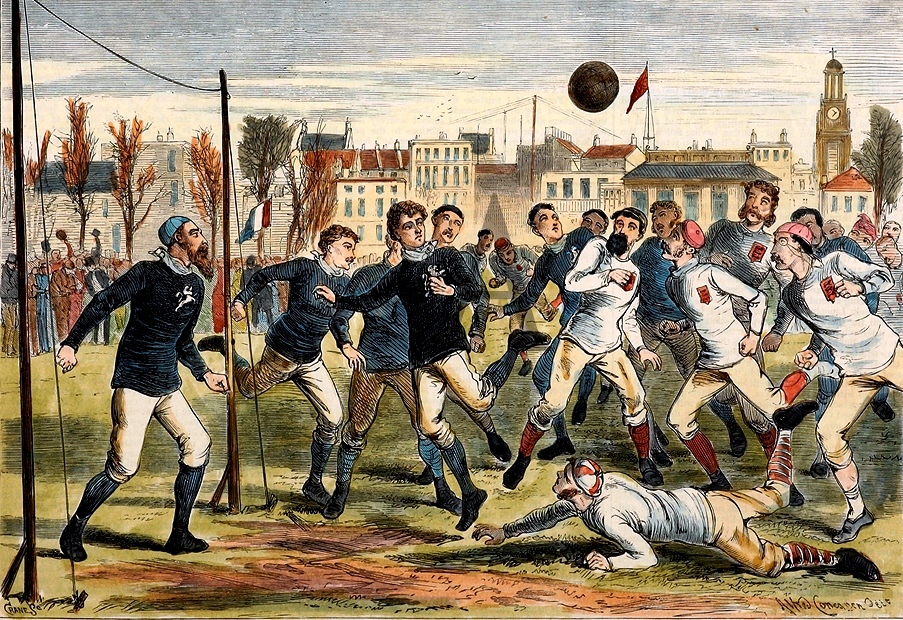


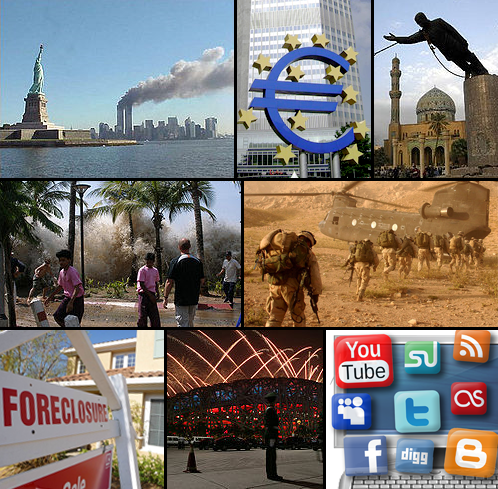
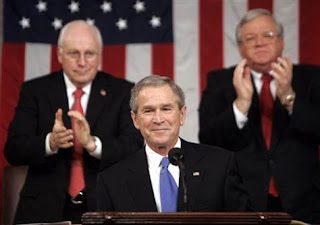



:max_bytes(150000):strip_icc():focal(528x6:530x8)/beyonce-jayz-80k-102422-7869d5d0cdc84ea0bc3837c75dbebbc1.jpg)
